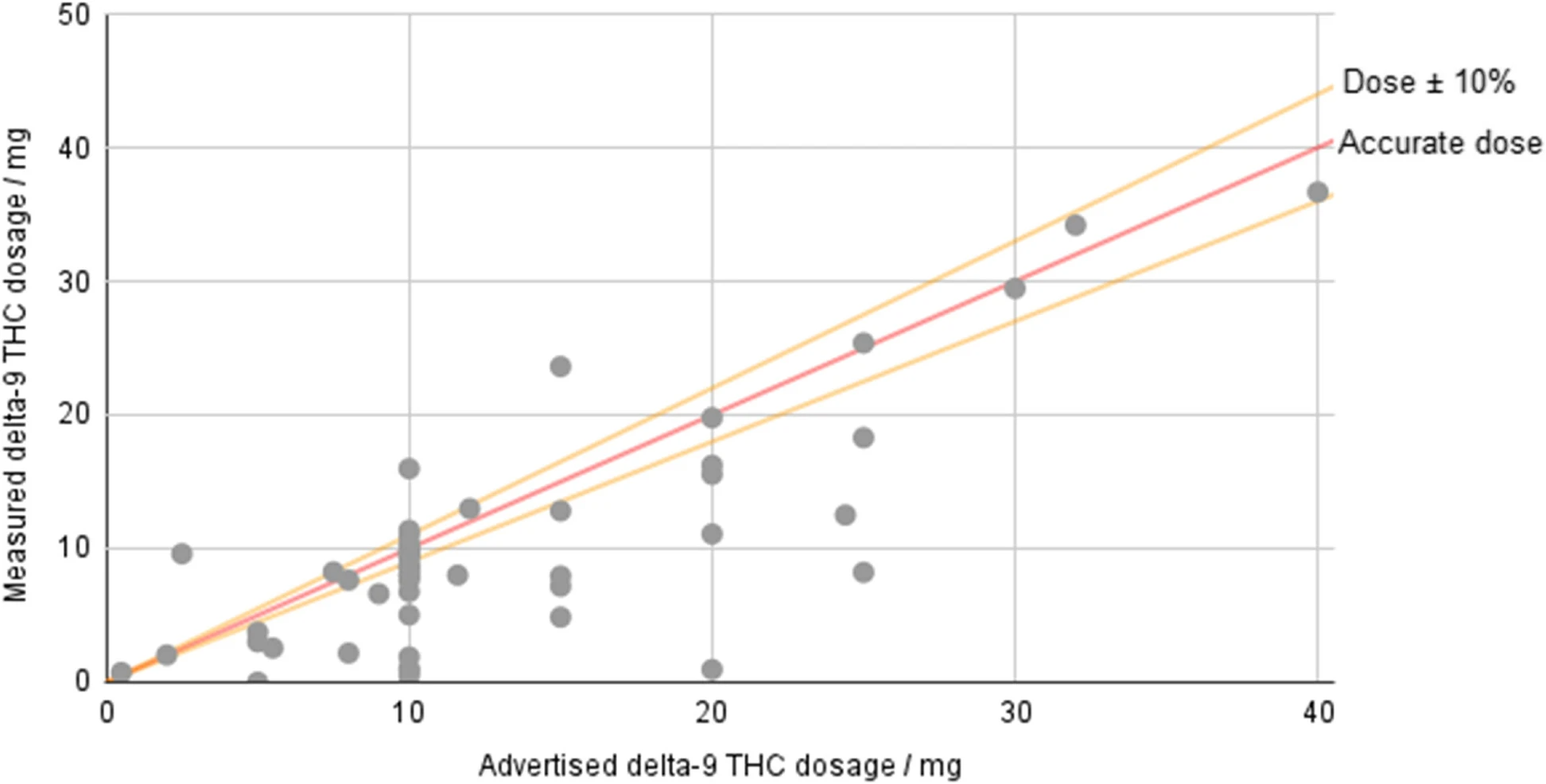Difference between revisions of "Template:Article of the month"
From CannaQAWiki
Jump to navigationJump to searchShawndouglas (talk | contribs) (Updated article of the month text.) |
Shawndouglas (talk | contribs) (Updated article of the month text) |
||
| (17 intermediate revisions by the same user not shown) | |||
| Line 1: | Line 1: | ||
<div style="float: left; margin: 0.5em 0.9em 0.4em 0em;">[[File: | <div style="float: left; margin: 0.5em 0.9em 0.4em 0em;">[[File:Fig3 Johnson JofCannRes23 5.png|220px]]</div> | ||
'''"[[Journal: | '''"[[Journal:Potency and safety analysis of hemp-derived delta-9 products: The hemp vs. cannabis demarcation problem|Potency and safety analysis of hemp-derived delta-9 products: The hemp vs. cannabis demarcation problem]]"''' | ||
[[Tetrahydrocannabinol| | [[Hemp]]-derived [[Tetrahydrocannabinol|delta-9-tetrahydrocannabinol]] (Δ<sup>9</sup>-THC) products are freely available for sale across much of the USA, but the federal legislation allowing their sale places only minimal requirements on companies. Products must contain no more than 0.3% Δ<sup>9</sup>-THC by dry weight, but no limit is placed on overall dosage, and there is no requirement that products derived from hemp-based Δ<sup>9</sup>-THC be tested. However, some states—such as Colorado—specifically prohibit products created by “chemically modifying” a natural hemp component ... ('''[[Journal:Potency and safety analysis of hemp-derived delta-9 products: The hemp vs. cannabis demarcation problem|Full article...]]''')<br /> | ||
<br /> | <br /> | ||
''Recently featured'': | ''Recently featured'': | ||
: ▪ [[Journal: | : ▪ [[Journal:A metabolomics and big data approach to cannabis authenticity (authentomics)|A metabolomics and big data approach to cannabis authenticity (authentomics)]] | ||
: ▪ [[Journal: | : ▪ [[Journal:Cadmium bioconcentration and translocation potential in day-neutral and photoperiod-sensitive hemp grown hydroponically for the medicinal market|Cadmium bioconcentration and translocation potential in day-neutral and photoperiod-sensitive hemp grown hydroponically for the medicinal market]] | ||
: ▪ [[Journal: | : ▪ [[Journal:High levels of pesticides found in illicit cannabis inflorescence compared to licensed samples in Canadian study using expanded 327 pesticides multiresidue method|High levels of pesticides found in illicit cannabis inflorescence compared to licensed samples in Canadian study using expanded 327 pesticides multiresidue method]] | ||
Latest revision as of 23:21, 30 November 2023
Hemp-derived delta-9-tetrahydrocannabinol (Δ9-THC) products are freely available for sale across much of the USA, but the federal legislation allowing their sale places only minimal requirements on companies. Products must contain no more than 0.3% Δ9-THC by dry weight, but no limit is placed on overall dosage, and there is no requirement that products derived from hemp-based Δ9-THC be tested. However, some states—such as Colorado—specifically prohibit products created by “chemically modifying” a natural hemp component ... (Full article...)
Recently featured:
- ▪ A metabolomics and big data approach to cannabis authenticity (authentomics)
- ▪ Cadmium bioconcentration and translocation potential in day-neutral and photoperiod-sensitive hemp grown hydroponically for the medicinal market
- ▪ High levels of pesticides found in illicit cannabis inflorescence compared to licensed samples in Canadian study using expanded 327 pesticides multiresidue method
